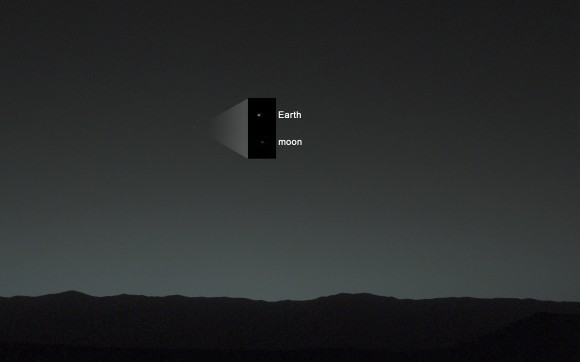Annotated evening-sky view taken by NASA’s Mars rover Curiosity shows the Earth and Earth’s moon – enlarged in inset – as seen on Jan. 31, 2014, or Sol 529 shortly after sunset at the Dingo Gap sand dune. Credit: NASA/JPL-Caltech/MSSS/TAMU
18 months into her mission to discover a habitable zone on the Red Planet, NASA’s Curiosity rover has at last looked back to the inhabited zone of all humanity and snapped her 1st image of all 7 Billion Earthlings living on the Home Planet.
“Look Back in Wonder… My first picture of Earth from the surface of Mars,” tweeted Curiosity today.
You are there! See yourselves in the spectacular imagery from the Red Planet’s surface and inside Gale Crater – above and below.
Car sized Curiosity captured the evocative image of Earth as an evening star in the Martian sky just days ago on Jan. 31, 2014, or Sol 529, some 80 minutes after sunset.
And what’s more is that the evening sky view even includes the Earth’s Moon!
Earth shines brilliantly as the brightest beacon in the Martian twilight sky view taken from the rovers current location at the edge of a sand dune dubbed the ‘Dingo Gap.’
“A human observer with normal vision, if standing on Mars, could easily see Earth and the moon as two distinct, bright “evening stars,” said NASA in a statement issued today.
via You are Here! Curiosity’s 1st Photo of Home Planet Earth from Mars.




